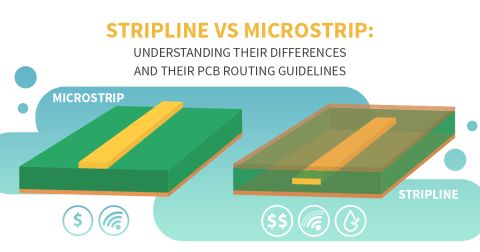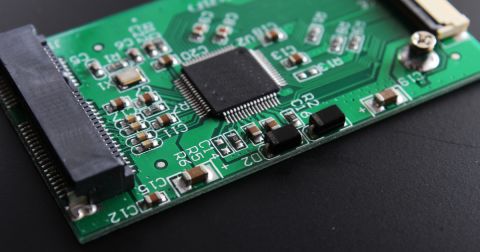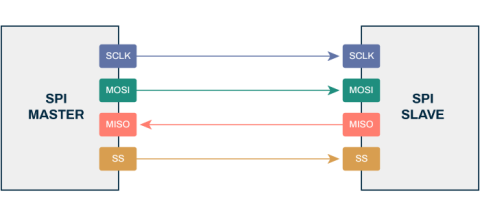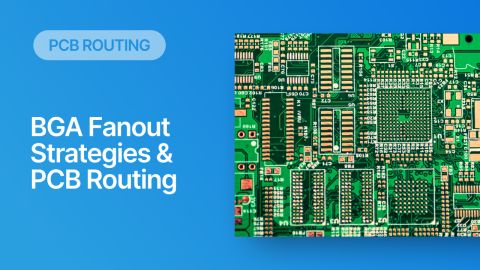Altium Designer: Leading the Charge in PCB Design Innovation

In the fast-paced world of electronics design, Altium Designer shines as a leader in innovation, constantly pushing the limits of what's possible in PCB (Printed Circuit Board) design. Renowned for its comprehensive and easy-to-use tools, Altium Designer has consistently introduced cutting-edge features that meet the growing needs of engineers and designers around the globe. Among its many advancements, three stand out as especially innovative: 3D-MID design, high-speed design improvements, and interactive routing enhancements. These features streamline the design process and significantly boost the performance and reliability of electronic products.
3D-MID Design: A New Dimension in PCB Innovation with Altium Designer
Altium Designer is redefining PCB design by leading the adoption of 3D Molded Interconnect Device (3D-MID) technology in design processes. This breakthrough approach allows electrical circuits to be directly molded onto three-dimensional plastic components, merging mechanical, electronic, and visual elements into a unified structure. Altium's expertise in 3D-MID technology is transforming key industries—including consumer electronics, automotive, healthcare, aerospace, and wearable technology—by enabling significant reductions in space and weight and enhancing functional integration. These advancements are setting new benchmarks for efficiency and performance across the board.

Transformative 3D-MID Capabilities
Altium Designer's adoption of 3D-MID technology marks a significant breakthrough in its offerings. This technology enables the crafting of complex, three-dimensional circuit structures that merge mechanical and electronic functions into a single unified component. The advantages of employing 3D-MID technology are extensive, ranging from lighter components and enhanced functionality to increased design versatility./p>
This software empowers designers to construct complex, multi-layered designs that can take on almost any conceivable shape. Such flexibility proves invaluable in fields where minimizing space and weight is paramount. For example, in the automotive and aerospace industries, lighter electronic components can drastically enhance fuel efficiency and overall performance. Similarly, in wearable technology, the emphasis on compact and lightweight designs is crucial for ensuring user comfort and practical functionality.
Advanced Design Tools
Altium Designer provides designers with sophisticated tools to visualize and manipulate 3D objects, seamlessly integrating both electronic and mechanical elements of the PCB. This integration is crucial for enhancing the design's performance and manufacturability. The software offers a smooth transition from conventional 2D PCB layouts to advanced 3D designs, equipped with comprehensive visualization and analysis tools. These tools allow designers to thoroughly simulate and assess every facet of the design to ensure it adheres to strict performance standards.
The capability to visualize and adjust 3D objects within the design environment facilitates a more intuitive and efficient process for crafting complex geometries. This efficiency accelerates prototyping and shortens the time to market, providing designers with a significant advantage in creating innovative products.
Industry Applications and Benefits
3D-MID technology is being utilized across a range of industries, bringing notable benefits. In consumer electronics, it enables the combination of multiple functions into a single, compact unit, improving both functionality and user experience. For instance, smartphones and wearables can become smaller and lighter while offering more features.
In the automotive sector, 3D-MID technology allows sensors and control units to be integrated directly into the vehicle's structure. This enhancement boosts reliability and simplifies the assembly process, resulting in more efficient manufacturing and lower production costs.
Healthcare devices also see significant improvements with 3D-MID technology. It allows for the design of smaller, lighter medical devices with greater functionality, leading to the development of more advanced diagnostic and therapeutic tools, which can improve patient outcomes.
High-Speed Design Improvements: Pushing the Limits of Performance with Altium Designer
As electronic devices become increasingly sophisticated, the need for high-speed signal transmission has become paramount. Altium Designer addresses this challenge head-on with a suite of high-speed design improvements that ensure signal integrity and minimize electromagnetic interference (EMI). These enhancements are critical for industries such as telecommunications, computing, and consumer electronics, where rapid data rates and reliable signal transmission are essential.

Advanced Signal Integrity Analysis
One of the standout features of Altium Designer is its advanced signal integrity analysis tool. This powerful tool allows designers to simulate and analyze high-speed signals in pre-layout and post-layout scenarios, providing detailed insights into potential issues such as crosstalk, reflection, and noise. By identifying these issues early in the design process, designers can make informed decisions that optimize the performance and reliability of their circuits.
The in-design analysis capabilities of Altium Designer enable designers to visualize how signals behave across different parts of the PCB, allowing for precise adjustments to improve signal integrity. This proactive approach helps to prevent costly and time-consuming revisions later in the design cycle.
Sophisticated Layer Stack Management
Altium Designer’s advanced Layer Stack Manager is another critical component in its high-speed design toolkit. This feature allows designers to have precise control over layer configurations, ensuring optimal signal propagation and reducing the risk of signal degradation. By managing the dielectric properties and thickness of each layer, designers can create PCBs that support high-speed signal transmission while maintaining signal integrity.
The Layer Stack Manager also supports the creation of complex multi-layer boards, which are often required in high-speed applications. This capability is particularly beneficial for designs that need to balance signal performance with physical constraints, such as in compact consumer electronics or high-density computing hardware.
Enhanced Impedance Control
Keeping signal integrity intact in high-speed designs is crucial, and Altium Designer shines when it comes to managing impedance. The software is equipped with advanced impedance control features, giving designers the ability to set and monitor impedance levels across the entire PCB. This is key to ensuring that high-speed signals are transmitted clearly and without any distortion, making the devices more reliable and efficient.
Getting the impedance matching right is essential for signal quality, especially in scenarios where signals need to travel long distances or navigate through complex routing paths. Thanks to Altium Designer's precision tools, designers can fine-tune their designs to meet the exact demands of high-speed applications.
Minimizing Electromagnetic Interference (EMI)
Altium Designer is packed with advanced features to tackle electromagnetic interference (EMI), which is a common headache in high-speed PCB design. EMI can seriously disrupt signal transmission, causing data errors and performance issues. Altium Designer's tools help designers identify potential EMI sources and develop strategies to counteract them.
For instance, the software lets designers strategically place ground planes and shielding structures to cut down on EMI and safeguard sensitive signals. With its various analysis capabilities, designers can instantly see how their design tweaks impact EMI, making it easier to make quick and effective adjustments.
Industry Applications and Benefits
Altium Designer's advancements in high-speed design are especially advantageous for sectors that depend on swift and dependable signal transmission. In the telecommunications industry, the quality of fast signal transmissions is crucial for sustaining high data rates and reliable communication. Altium Designer equips telecom engineers with powerful tools that enable them to craft designs that fulfill these stringent requirements, ensuring clear and continuous signal transmission.
In the computing sector, high-speed signals are vital for data processing and communication among various components. Altium Designer's sophisticated features help designers of computing hardware refine their PCBs for both speed and dependability, thereby boosting the efficiency of servers, data centers, and consumer electronics.
Interactive Routing Improvements: Enhancing Precision and Efficiency with Altium Designer
Routing is a fundamental aspect of PCB design, and Altium Designer has consistently set the standard with its interactive routing improvements. These enhancements are crafted to provide greater control, precision, and efficiency, making the routing process faster and more intuitive. By incorporating features like ActiveRoute technology, push and shove routing, and advanced via management, Altium Designer empowers designers to tackle complex routing challenges with ease and accuracy.

ActiveRoute Technology: A Hybrid Approach
One of the standout features of Altium Designer's interactive routing is its ActiveRoute technology. This tool blends the strengths of manual and automatic routing, letting designers steer the process interactively while using smart algorithms to optimize the path selection. This hybrid approach means even the toughest routing challenges can be tackled with precision and control, resulting in layouts that meet all design specs.
ActiveRoute technology speeds up the routing process by automating routine tasks but still gives designers the flexibility to make key decisions. This mix of automation and manual input cuts down on the time and effort needed for routing, making the whole design process more efficient and less error-prone.
Push and Shove Routing: Real-Time Adjustments
Altium Designer has significantly improved its push and shove routing capabilities, allowing for real-time adjustments as new routes are added. This real-time feedback keeps the PCB layout in line with design rules and constraints, reducing the need for lengthy revisions. Designers can see the effects of their changes immediately, helping them make smart decisions quickly.
These push and shove capabilities also ensure a tidy and well-organized board layout, which is crucial for the performance and reliability of the final product. By allowing for dynamic adjustments, Altium Designer helps avoid routing conflicts and ensures the PCB meets all electrical and mechanical requirements.
Advanced Via Management: Optimizing Placement
Effective via management is crucial in PCB design, and Altium Designer excels in this area with its advanced via management features. The software allows designers to define and manage various via types, including through-hole, blind, and buried vias, ensuring optimal signal integrity and board performance. These advanced tools enable designers to strategically place vias to optimize signal paths and minimize potential interference, resulting in better-performing PCBs and more cost-effective manufacturing processes. By minimizing unnecessary vias, Altium Designer helps reduce drilling and plating requirements, lowering manufacturing costs and enhancing the reliability of complex multi-layer PCBs. This flexibility and precision are essential for meeting the stringent requirements of modern electronic devices.
Conflict Resolution Capabilities: Ensuring Compliance
Altium Designer's interactive routing includes exceptional conflict resolution capabilities. As designers manipulate routes, the software dynamically assesses and resolves conflicts with existing routes, ensuring compliance with design rules. This automatic conflict resolution reduces the need for manual rework, speeding up the design process and improving the reliability of the final product.
The ability to automatically resolve routing conflicts ensures that PCBs are designed according to best practices and industry standards. This not only enhances the quality of the design but also reduces the time and effort required to finalize the PCB layout.
Conclusion
Altium Designer is revolutionizing PCB design with its cutting-edge 3D-MID technology, setting new industry benchmarks. This technology seamlessly integrates electronic functions into three-dimensional shapes, greatly enhancing the look and functionality of electronic products. It boosts the efficiency and reliability of electronic integration while opening up exciting creative possibilities across various industries. Offering cost-effective solutions for both everyday and specialized devices, Altium Designer continues to be the go-to choice for engineers and designers leading the way in PCB design innovation.
Furthermore, Altium Designer is at the forefront of high-speed PCB design, armed with a robust suite of tools crafted to address the complex challenges faced by modern electronic devices. It stands out in areas such as signal integrity analysis, layer stack management, impedance control, and reducing electromagnetic interference (EMI), empowering designers to boost performance and create cutting-edge products. For industries that depend on rapid data transmission and consistent signal integrity, Altium Designer offers indispensable tools that drive success in today's rapidly evolving technological landscape.
Altium Designer has also made impressive advancements in interactive routing, marking significant progress in PCB design technology. It merges advanced routing algorithms with features for real-time adjustments and conflict resolution, ensuring that designers can achieve the highest levels of precision, efficiency, and ease of use in their projects. These enhancements not only streamline the design process but also boost the performance and reliability of the final PCBs. Whether it's crafting simple boards for consumer electronics or complex, multi-layer PCBs for industrial applications, Altium Designer's routing improvements make it an essential asset in modern times.










